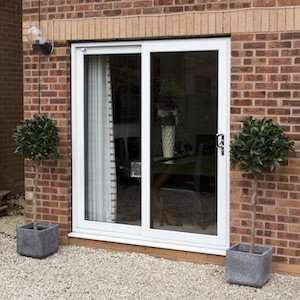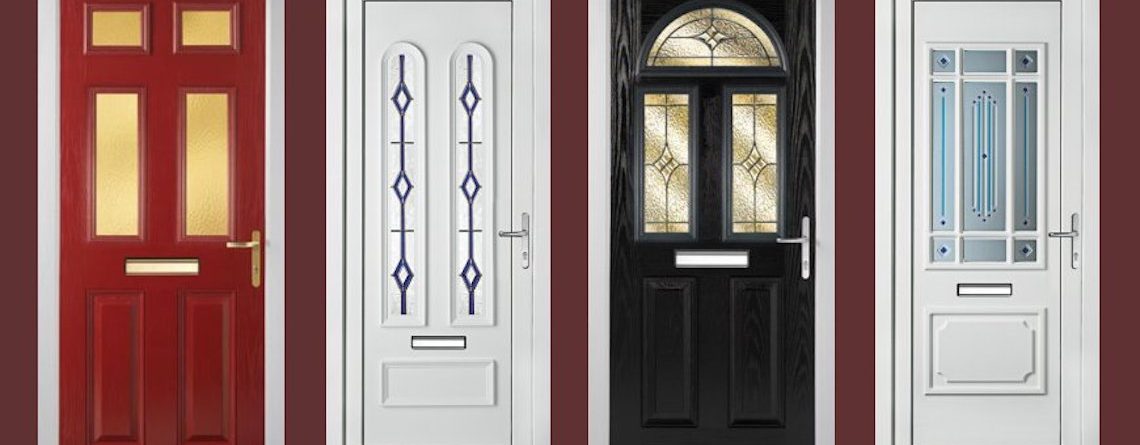
Black Shadows © 2013 -
Mentions légales/Policies
Mentions légales/Policies


Doors and windows are more than simply practical components of a structure; they are integral to the character, security, and energy efficiency of homes and business properties across the United Kingdom. From the classic appeal of sash windows in Georgian townhouses to the sleek modernity of bi-fold doors in modern homes, the UK boasts a varied range of designs and products in its windows and door landscape. Understanding the nuances of this market is crucial for homeowners, builders, and anyone wanting to update or install new doors and windows in the UK.

This article looks into the world of doors and windows in the UK, exploring the numerous types offered, the typical products used, the regulative requirements they should fulfill, and the key factors to consider when making choices for your residential or commercial property.
A Gateway to Style and Functionality: Exploring Door Types in the UK
Doors are the inviting handshake of any structure, offering access, security, and contributing considerably to the overall aesthetic. In the UK, a variety of door types cater to diverse needs and architectural styles.
front doors with windows Doors: The primary entry point of a home needs to be both protect and visually enticing. Common front door products in the UK consist of:
Internal Doors: These french doors with side windows specify areas within a property, using privacy and sound insulation. Common types consist of:
Patio Doors: Connecting indoor living areas with gardens or patios, these doors bring in natural light and deal easy access to outdoor areas. Popular patio area door enters the UK consist of:
Letting the Light In: Understanding Window Types in the UK
Windows are vital for natural light, ventilation, and the total atmosphere of a structure. The UK provides a varied series of window designs, each with its own characteristics and advantages.
Sash Windows: The most typical type in the UK, casement windows are hinged at the side or top and open outwards. They provide excellent weather sealing and security.
Sash Windows: A classic British design, especially common in duration properties. Sash windows consist of two panels (sashes) that move vertically, typically counterbalanced by weights and cords. They are known for their sophisticated appearance however can be less energy-efficient than modern window types if not well-maintained.
Tilt and Turn Windows: Offering versatility, tilt and turn windows can be tilted inwards for ventilation and fully opened inwards for easy cleansing. They are popular in modern homes and apartments for their usefulness and security features.
Bay Windows: Projecting outwards from a building, bay windows create additional interior area and deal broader views. They are typically discovered in Victorian and Edwardian homes throughout the UK.
Set Windows (Picture Windows): Non-opening windows created to take full advantage of natural light and views. Frequently used in combination with opening windows for ventilation.
Material Matters: Choosing the Right Materials for UK Doors and Windows
The option of material considerably affects the efficiency, aesthetic appeals, and life-span of windows and doors. In the UK, the most common products consist of:
uPVC: As mentioned previously, uPVC is a widely utilized material for both doors and windows in the UK. It’s affordable, low upkeep, energy-efficient, and uses good security. Modern upvc doors with windows systems can also be produced to mimic the look of timber.
Timber: A traditional option offering natural appeal and outstanding insulation homes. Sustainable timber sources are significantly crucial. Woods like oak are long lasting but more costly, while softwoods like pine are more inexpensive however require more frequent maintenance in the UK environment.
Aluminium: Increasingly popular for modern styles, aluminium is strong, light-weight, and long-lasting. It can be powder-coated in various colours and uses slim profiles, maximizing glass area. Thermally broken aluminium systems are essential for energy efficiency in the UK.
Composite: Combining products like timber, uPVC, and aluminium to utilize their highests. Typically used for front doors, offering high performance in security, insulation, and weather condition resistance with different visual alternatives.
Browsing Regulations and Standards in the UK
Doors and windows in the UK must comply with strict structure regulations and standards to guarantee security, energy effectiveness, and ease of access. Secret factors to consider consist of:
Building Regulations Part L (Conservation of Fuel and Power) and Part F (Ventilation): These guidelines set minimum standards for thermal efficiency and ventilation to decrease energy consumption and keep healthy indoor air quality. Doors and window U-values (measuring heat loss) and Window Energy Ratings (WERs) are important elements.
Structure Regulations Part Q (Security): This part focuses on security standards for windows and doors in new houses to lessen the risk of break-in. Security functions such as multi-point locking systems and laminated glass are crucial.
Building Regulations Part M (Access to and Use of Buildings): Ensures that buildings are accessible to all, including individuals with impairments. This can impact door widths, threshold heights, and window operation in particular circumstances.
British Standards (BS): Various British Standards connect to the efficiency and testing of windows and doors, covering elements like weather condition resistance, security, and acoustic performance.
Energy Efficiency: Keeping Homes Warm and Bills Low
In the UK, where energy prices are a considerable issue, energy-efficient windows and doors are essential. Double or triple glazing, thermal breaks, and energy-efficient frame materials all contribute to minimizing heat loss and enhancing a property’s energy efficiency. Try to find doors and windows with high Window Energy Ratings (WERs), often graded from A++ to G, with A++ being the most energy-efficient.
Security First: Protecting Your Home
Security is a vital factor to consider for windows and doors in the UK. Functions to try to find include:
Trends in UK door with sliding window and Window Design
The aesthetics of windows and doors are continuously evolving. Present trends in the UK consist of:
Maintaining Your Doors and Windows
Correct upkeep extends the life-span and performance of doors and windows.
Conclusion
Picking the right windows and doors for a UK property is a significant decision including considerations of style, security, energy efficiency, and budget plan. By comprehending the various types, materials, policies, and trends, house owners and builders can make informed choices that boost their properties and develop comfortable, secure, and energy-efficient home. Whether you are remodeling a period home or developing a brand-new property, the UK market offers a vast array of doors and windows to satisfy every need and visual preference.
Regularly Asked Questions (FAQs)
Q: Do I need planning consent to replace my doors and windows in the UK?A: Generally, changing windows and doors like-for-like in an existing house does not require preparation consent. However, there are exceptions, particularly in preservation areas, noted structures, or if you are making significant alterations to the appearance of your property. It is always best to check with your local planning authority to validate if permission is needed.
Q: What is a U-value and why is it important for doors and windows?A: A U-value procedures the rate of heat loss through a material. For windows and doors, a lower U-value indicates better thermal insulation. In the UK, Building Regulations set minimum U-value requirements for brand-new doors and windows to ensure energy efficiency. Picking doors and windows with low U-values can substantially reduce heating bills.
Q: What are Window Energy Ratings (WERs)?A: Window Energy Ratings (WERs) are a system utilized in the UK to rate the energy efficiency of windows. They are graded on a scale from A++ (most effective) to G (least effective). WERs take into consideration aspects such as solar heat gain, heat loss, and air leak to offer an extensive step of a window’s energy efficiency.
Q: How often should I replace my windows and doors?A: The life expectancy of windows and doors depends upon the material and quality of setup. uPVC and aluminium windows can last for 20-30 years or more, while timber windows may need replacing earlier depending upon upkeep. Try to find signs of wear and tear, such as drafts, condensation within the glass panes, trouble opening and closing, or rot in timber frames, as signs that replacement may be needed.
Q: What are the benefits of double or triple glazing in the UK?A: Double or triple glazing consists of two or 3 panes of glass with an insulating gas (like argon) in between. The advantages consist of:
Q: What are the security requirements I should search for in doors and windows?A: Look for doors and windows that meet or surpass the requirements of Building Regulations Part Q (Security) or Secured by Design standards. Key security functions include:
By considering these aspects and comprehending the options available, it’s possible to make informed decisions about doors and windows that improve both the beauty and performance of any UK property.